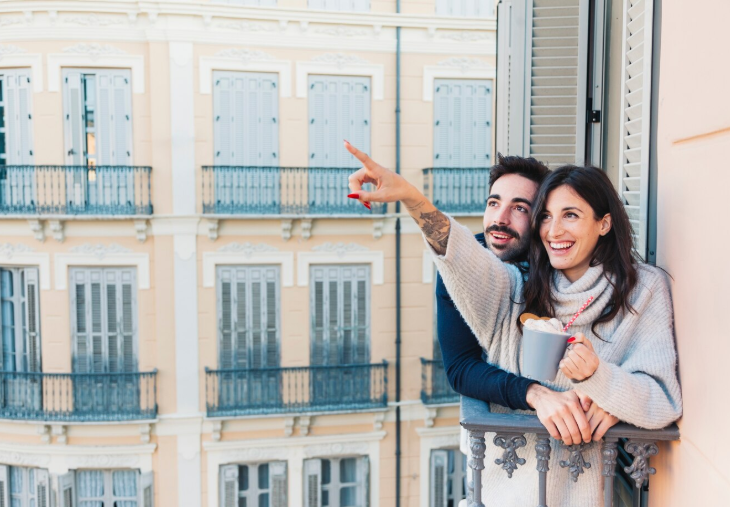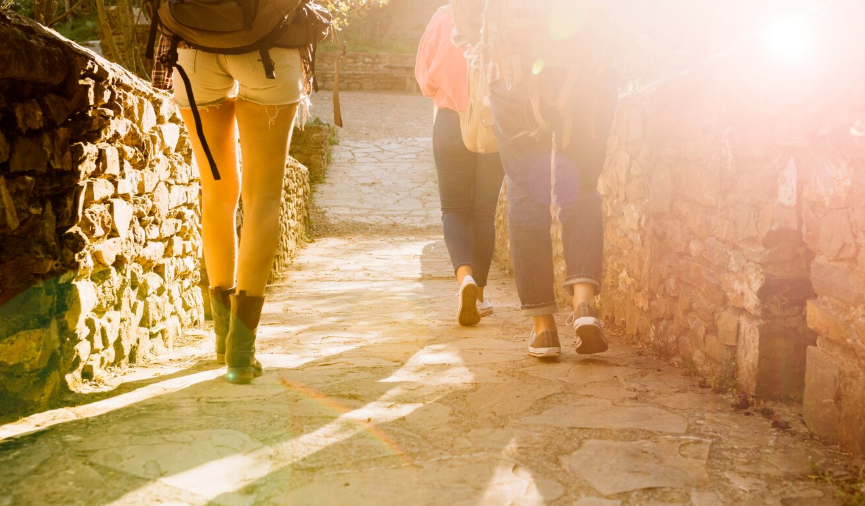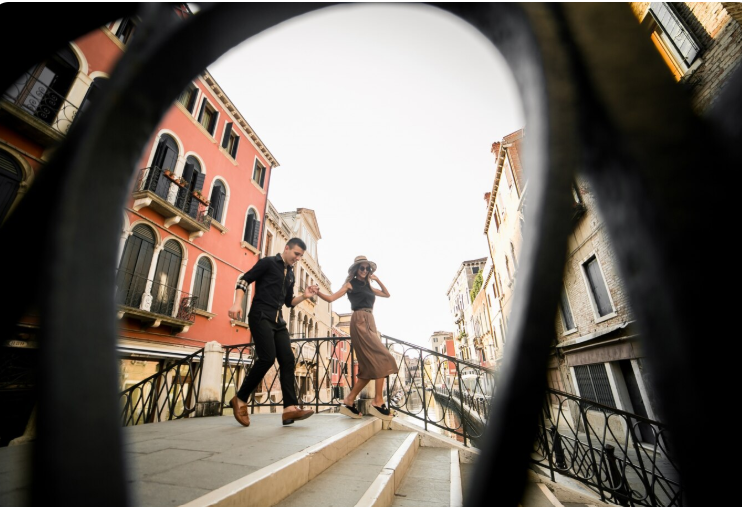
by Dulce Navarro | Jul 9, 2025 | Consumer, Countries, Europe, Lifestyle, Travel
Wine Regions in Spain Worth Traveling For
Spain is one of the world’s premier wine-producing countries, home to centuries-old traditions and a staggering variety of terroirs. From the bold reds of Rioja to the sparkling cavas of Catalonia, Spanish wine regions offer more than just great vintages—they provide unforgettable travel experiences steeped in culture, history, and gastronomy. Whether you’re a seasoned wine connoisseur or a curious traveler, here are the wine regions in Spain that are truly worth exploring.
1. La Rioja: The Flagship of Spanish Wine
La Rioja is Spain’s most famous wine region and the first to receive Denominación de Origen Calificada (DOCa) status. Located in the north of Spain, Rioja is known for producing elegant, oak-aged red wines—primarily from the Tempranillo grape. The region is divided into three subzones: Rioja Alta, Rioja Alavesa, and Rioja Oriental, each offering subtle differences in climate and wine profiles.
Visitors to Rioja can enjoy guided tours of historic bodegas (wineries), many of which offer tastings, wine-pairing meals, and insights into centuries-old winemaking techniques. The capital, Logroño, is also a culinary hub, known for its tapas culture along Calle Laurel.
2. Ribera del Duero: Robust Reds and Striking Landscapes
Located along the Duero River in Castilla y León, Ribera del Duero is a powerful rival to Rioja when it comes to red wine. The region’s high-altitude vineyards and extreme temperatures yield full-bodied wines with rich, concentrated flavors. Tempranillo—locally known as Tinta del País—is the dominant grape.
This region is home to prestigious wineries like Vega Sicilia and Dominio de Pingus, both known internationally for producing world-class reds. Wine tourism is well-developed, with luxurious rural hotels, vineyard visits, and tastings offered throughout the region.
3. Priorat: A Boutique Treasure in Catalonia
Priorat, one of only two DOCa regions in Spain (along with Rioja), is located in the hills of Catalonia. It’s a small but highly respected region producing bold, mineral-rich reds primarily from Garnacha (Grenache) and Cariñena (Carignan) grapes.
The terrain here is dramatic, with steep, terraced vineyards planted on slate soil known as “llicorella.” This unique soil composition contributes to the region’s powerful and age-worthy wines. Due to its boutique nature, wine tourism in Priorat feels exclusive and deeply personal—perfect for travelers looking to explore Spain’s artisanal wine culture.
4. Rías Baixas: Home of the Albariño
In the misty, green region of Galicia in northwestern Spain lies Rías Baixas, famed for its crisp, aromatic white wines made from Albariño. This coastal region produces wines that are fresh, floral, and perfectly suited to accompany seafood—the local specialty.
Wine lovers will enjoy exploring the area’s scenic villages, lush vineyards, and proximity to the Atlantic Ocean. Rías Baixas is ideal for those who prefer white wines and coastal cuisine, and it offers a cooler, more relaxed atmosphere than some of Spain’s hotter inland regions.
5. Penedès: The Sparkling Capital
Just a short drive from Barcelona, Penedès is best known as the heart of Cava production—Spain’s answer to Champagne. The region produces both white and rosé Cava using traditional methods, primarily with indigenous grape varieties like Macabeo, Xarel·lo, and Parellada.
In addition to sparkling wines, Penedès also produces a wide variety of still wines. Touring the region is easy and rewarding, with many wineries offering visits and tastings. The proximity to Barcelona makes it an excellent day trip or weekend escape for wine lovers.
6. Jerez (Sherry Triangle): A Journey Through Tradition
Jerez, located in the Andalusian province of Cádiz, is the birthplace of Sherry. This fortified wine comes in several styles, from the dry and nutty Fino to the rich and sweet Pedro Ximénez. The region’s unique solera aging system sets it apart from other winemaking traditions.
Wine tourism in Jerez is steeped in culture—you can visit ancient bodegas, witness flamenco performances, and enjoy Andalusian cuisine. The nearby towns of Sanlúcar de Barrameda and El Puerto de Santa María form the rest of the “Sherry Triangle,” each offering unique Sherry styles and coastal charm.
7. Valencia: Emerging Excellence
Valencia is rapidly gaining recognition for its innovative winemakers and diverse terroirs. From full-bodied reds to fresh whites and modern blends, the region is experimenting while still honoring local traditions. The climate and landscape allow for sustainable practices and organic production, which many boutique producers are embracing.
With its Mediterranean coastline, historic architecture, and vibrant culinary scene, Valencia offers a full travel experience—not just for wine lovers but for all travelers seeking authenticity and variety.
8. Somontano: Spain’s Hidden Gem
Somontano, located at the foot of the Pyrenees in Aragón, may not be as widely known as Rioja or Ribera, but it has quietly developed a reputation for producing high-quality wines. The name Somontano means “under the mountain,” and the region benefits from a mix of mountain and Mediterranean climates.
This diversity allows for a wide range of grape varieties—Cabernet Sauvignon, Merlot, Gewürztraminer, and local types like Moristel. The area is peaceful, less crowded, and ideal for travelers who want a slower pace and a more intimate connection with winemaking.
Learning New Languages as an Expat: Strategies for Quick Success
Exploring Spain’s wine regions is more than just a tasting experience—it’s an immersion into the culture, history, and language of each area. For expats, learning the local language not only enhances your travel but also helps you integrate and build meaningful relationships.
Here are some strategies for quick language success:
- Practice Daily: Use language apps like Duolingo or Babbel to maintain a consistent routine.
- Engage Locally: Participate in wine tours, local markets, or cooking classes where you’re exposed to everyday conversations.
- Hire a Tutor: One-on-one lessons (in-person or online) can accelerate your fluency.
- Label Your Surroundings: Put sticky notes on items in your home with their Spanish names to build vocabulary naturally.
- Watch & Listen: Immerse yourself in Spanish-language films, series, and music to strengthen your listening skills and pronunciation.
Language fluency is one of the best investments you can make as an expat—it transforms your ability to engage, connect, and truly experience life abroad.
Stay Connected for More Travel and Lifestyle Inspiration. For more insights into travel, culture, and lifestyle tips, follow me on @salvadorordorica. If you’re seeking professional translation and localization services to enhance your global ventures, visit The Spanish Group — your trusted partner in bridging cultures worldwide.

by Dulce Navarro | Jul 9, 2025 | Countries, Culture, Europe, Housing, Lifestyle, Residency
Finding Housing in Paris: Tips for Expats and Nomads
Paris remains one of the most sought-after cities in the world for expats and digital nomads alike. Its cultural charm, culinary excellence, and international atmosphere make it an ideal destination for those looking to live abroad. However, finding the right housing in the City of Light can be challenging, especially for those unfamiliar with the local market. In this article, we’ll guide you through practical strategies for securing a place to live in Paris, and offer helpful tips for adapting to life in a new country.
Understand the Paris Housing Market
The Paris housing market is competitive, fast-paced, and often expensive. High demand and limited supply can make securing an apartment a time-consuming process. It’s important to set realistic expectations before you begin your search. Rentals in the central arrondissements (1st to 8th) are generally more expensive, while the outer arrondissements or nearby suburbs (like Montreuil, Saint-Ouen, or Boulogne-Billancourt) may offer better value without sacrificing quality of life.
Furnished apartments are a popular option for expats and nomads. They eliminate the hassle of purchasing furniture and provide a more flexible lease structure. However, they typically come with a premium in rent.
Start Your Search Early
It’s wise to begin your search at least one to two months before your planned move-in date. This allows time to explore different neighborhoods, compare rental prices, and prepare necessary documentation. Platforms like SeLoger, LeBonCoin, and Paris Attitude are commonly used for apartment hunting. Social media groups and expat forums can also be a valuable resource for finding both long-term rentals and short-term sublets.
Work With a Reputable Agency or Relocation Expert
If you’re unfamiliar with French rental laws or don’t speak the language, consider working with a relocation consultant or rental agency. While this service typically includes fees, it can save you time and minimize miscommunications. Many agencies specialize in working with expats and are familiar with the unique requirements of international clients.
Agencies can also help you prepare essential documents, navigate lease contracts, and ensure compliance with legal obligations — such as the need for renters’ insurance (assurance habitation) and proper registration with local authorities.
Prepare Your Documentation
Landlords in Paris often require a comprehensive dossier to evaluate rental applications. This typically includes:
- Passport or valid ID
- Proof of income (such as employment contract or bank statements)
- Recent pay slips or tax returns
- Guarantor information (if applicable)
- Proof of previous residence
If you’re self-employed or a freelancer, expect to provide additional financial documentation to prove your solvency. Having these documents translated into French can expedite the process — professional translation services like The Spanish Group can assist with this.
Know Your Lease Options
In France, rental agreements generally fall into two categories: furnished (meublé) and unfurnished (vide). A furnished lease typically lasts for one year and is renewable, whereas an unfurnished lease often runs for three years. Short-term leases under 12 months are less common in traditional markets, but available through specialized agencies or vacation rental platforms.
Make sure to review the lease terms carefully. Confirm what’s included in the rent (utilities, maintenance fees, etc.), and verify the condition of the apartment through an official inspection (état des lieux) before moving in.
Explore Different Neighborhoods
Each Parisian neighborhood (arrondissement) has its own charm, pace, and personality. The Marais (3rd and 4th) is trendy and historic, while Saint-Germain-des-Prés (6th) offers a more classic Parisian lifestyle. Montmartre (18th) is artistic and bohemian, while the 11th and 12th arrondissements attract a younger, vibrant crowd with plenty of cafés and bars.
If you’re staying long-term, you may also consider residential neighborhoods outside the city center. Suburbs like Neuilly-sur-Seine or Vincennes offer quieter lifestyles with excellent public transportation connections to central Paris.
Consider Temporary Housing While You Search
If you’re unable to secure a long-term apartment before arrival, temporary housing may be a good interim solution. Hotels, serviced apartments, or Airbnb rentals can provide a flexible base while you attend viewings and finalize lease agreements. Some co-living spaces in Paris cater specifically to expats and digital nomads, offering furnished rooms, coworking spaces, and built-in communities.
Understand the Cultural Nuances
Patience and politeness go a long way in France. Responses to rental inquiries may take longer than expected, and it’s not uncommon to encounter bureaucracy. Staying professional, persistent, and respectful will serve you well.
It’s also helpful to brush up on French rental terminology to better understand contracts and communicate with landlords. Even a basic level of French can make the process smoother and show goodwill to potential landlords or agencies.
Learning New Languages as an Expat: Strategies for Quick Success
Language is one of the key factors for integrating smoothly into a new country. For expats in Paris, learning French will not only ease day-to-day interactions but also help you feel more connected to the local culture and community. Here are some strategies to accelerate your learning:
- Use language apps like Duolingo, Babbel, or Memrise daily.
- Take in-person or online French lessons, even if just once a week.
- Practice with locals — join conversation groups or language exchanges.
- Label items around your apartment in French to build vocabulary.
- Watch French films or listen to French podcasts with subtitles.
Consistency is key. Even 15–30 minutes per day can create remarkable progress over time. As your language skills grow, so will your confidence navigating life in Paris — from reading rental agreements to making new friends.
Stay Connected for More Travel and Lifestyle Inspiration. For more insights into travel, culture, and lifestyle tips, follow me on @salvadorordorica. If you’re seeking professional translation and localization services to enhance your global ventures, visit The Spanish Group — your trusted partner in bridging cultures worldwide.

by Dulce Navarro | Jul 8, 2025 | Countries, Culture, Europe, Lifestyle, Travel
Navigating Business Etiquette in France: A Modern Guide
France is globally known for its cultural richness, refined style, and a deeply rooted sense of formality — characteristics that often shape the way business is conducted in the country. For international executives, entrepreneurs, or companies seeking to expand into the French market, understanding and adapting to local business etiquette can be the difference between closing a deal and missing an opportunity.
Whether you’re scheduling meetings in Paris or developing partnerships in Lyon, mastering the unspoken rules of French professional conduct will elevate your business presence and build long-term trust. This guide explores the key elements of doing business in France, including communication styles, meeting culture, dress code, and relationship-building strategies.
1. Formality and Hierarchy in the French Workplace
One of the first things foreign professionals notice is the formality embedded in French business culture. While French society has modernized in many ways, business communication and structure remain formal and hierarchical. Titles matter — especially when speaking with senior executives or government officials.
- Use proper titles such as “Monsieur” or “Madame” followed by the surname unless invited to use first names.
- Academic and professional credentials are often used in introductions, particularly in legal, academic, and technical fields.
- Decision-making tends to be top-down, and approvals may take longer than in more horizontal business cultures.
While younger professionals may be less rigid, it’s always wise to default to formality in initial encounters.
2. The Art of Professional Communication
French business communication tends to be intellectual, polished, and somewhat indirect. Eloquence and clarity are highly valued. In both written and spoken form, professionals often take a diplomatic approach, favoring well-structured arguments over casual dialogue.
Email correspondence and business proposals are expected to be grammatically correct and stylistically refined. Humor should be used cautiously and always in good taste. Avoid overly emotional language or aggressive sales tactics, as these may be seen as unprofessional or presumptuous.
It’s also important to note that the French are highly protective of their language. Making an effort to speak even a little French in meetings or written communication demonstrates respect and goes a long way in building rapport.
3. Scheduling and Conducting Meetings
Punctuality is respected in French business but not always practiced strictly. Arriving a few minutes early is considered professional, but be prepared for the meeting to start later than expected.
- Meetings are typically scheduled well in advance and often confirmed the day before.
- Agendas are appreciated, especially in corporate environments, although there may still be an element of flexibility during the discussion.
- Expect thorough analysis and debate before decisions are made — the French value critical thinking and may challenge ideas even if they agree with them overall.
Small talk, particularly around culture, history, or food, is welcomed at the start of meetings. However, personal topics should be avoided unless a strong relationship has already been established.
4. Business Attire and First Impressions
Appearance plays a significant role in France’s business culture. Dressing well signals respect, professionalism, and attention to detail. Conservative and elegant styles are favored over flashy or overly casual looks.
- Men: A tailored suit in neutral colors, polished shoes, and minimal accessories.
- Women: Business suits or sophisticated dresses with modest cuts and understated elegance.
- Grooming: Clean, polished appearances are essential. In creative industries, a slightly more relaxed style is accepted but still sharp.
First impressions are lasting in France, so a well-groomed, professional appearance is crucial from the outset.
5. Relationship Building and Trust
In French business culture, trust is built slowly through consistent professionalism and intellectual respect. Business is not rushed, and initial meetings may be more about assessing compatibility than closing a deal.
- Don’t push for rapid results. Focus on building credibility and demonstrating long-term commitment.
- Social engagements, such as business lunches or formal dinners, are common and should be treated seriously — being late or overly casual can damage a relationship.
- Business and personal life are often kept separate. Avoid asking too many personal questions unless the relationship becomes more established.
Once a relationship is built, French partners tend to be loyal, honest, and dedicated to mutual success.
6. Negotiations and Contracts
French professionals are skilled negotiators who appreciate logical reasoning and a well-prepared argument. Contracts tend to be detailed and are often reviewed multiple times before signing.
Expect negotiation to take time and be open to revisions. Unlike in some cultures, a handshake does not usually finalize a deal — everything must be in writing and thoroughly reviewed. French law favors written documentation, so keep meticulous records of all agreements.
Learning New Languages as an Expat: Strategies for Quick Success
If you’re planning to live or work in France long-term, learning the language will enhance every aspect of your experience — professionally and personally. Even a basic level of French can make a positive impression and deepen relationships.
Here are a few strategies for quick language success:
- Start before you arrive: Use language apps or online courses like Babbel, Rosetta Stone, or Duolingo.
- Take formal classes: Enroll in Alliance Française or local language institutes offering structured programs.
- Immerse yourself: Read French newspapers, listen to French radio, and watch local TV with subtitles.
- Speak daily: Practice in everyday situations — ordering coffee, navigating transportation, or making small talk with locals.
- Language exchange: Partner with a local for weekly language swaps — one speaks English, the other French.
Learning a new language is a commitment, but the rewards — increased integration, confidence, and new opportunities — are more than worth the effort.
Stay Connected for More Travel and Lifestyle Inspiration.
For more insights into travel, culture, and lifestyle tips, follow me on Instagram @salvadorordorica. If you’re seeking professional translation and localization services to enhance your global ventures, visit The Spanish Group — your trusted partner in bridging cultures worldwide.

by Dulce Navarro | Jul 7, 2025 | Countries, Culture, Europe, Lifestyle, Travel
Hidden Gems in Italy: Local Secrets Beyond the Tourist Trail
Italy is famous for its world-renowned cities—Rome, Venice, Florence, and Milan—each teeming with art, architecture, and timeless charm. Yet, beyond the iconic destinations lies another Italy, one filled with lesser-known towns, secluded landscapes, and cultural treasures untouched by mass tourism. For the discerning traveler seeking authenticity, tranquility, and local flavor, exploring Italy’s hidden gems offers an unforgettable journey into the soul of the country.
Why Go Off the Beaten Path?
Traveling beyond Italy’s tourist trail isn’t just about avoiding crowds—it’s about discovering real life as it’s lived by locals. Smaller towns and remote regions allow for deeper cultural immersion, intimate culinary experiences, and genuine hospitality. These destinations offer more space to explore at your own pace, with lower costs and a slower rhythm that invites you to linger.
1. Civita di Bagnoregio – The Dying City
Located in the Lazio region, Civita di Bagnoregio is often called “the dying city” due to its crumbling volcanic foundation and near-abandonment. Accessible only by footbridge, this dramatic hilltop village is straight out of a fairytale. Its ancient cobblestone streets, flower-adorned balconies, and panoramic views make it one of Italy’s most photogenic secrets. Though small, its charm is immense, and visiting helps support the preservation of this endangered town.
2. Procida – Italy’s Colorful Island Escape
While Capri and Ischia often draw the spotlight in the Bay of Naples, Procida remains a hidden gem. This tiny island, with its pastel-colored buildings and narrow lanes, feels frozen in time. It was named Italy’s Capital of Culture in 2022 and remains blissfully quiet even in peak season. Seafood lovers will adore the waterfront trattorias, and the slow pace is perfect for unwinding. Ferries from Naples make it easily accessible for a peaceful day trip.
3. Castelmezzano – A Village in the Clouds
Nestled in the Dolomiti Lucane mountains of Basilicata, Castelmezzano is one of Italy’s most breathtaking hill towns. Surrounded by dramatic peaks, the village offers adventurous travelers hiking trails, zip-lining between mountaintops, and epic views. Beyond the thrill, Castelmezzano is rich in folklore, and its unspoiled charm makes it a must for those craving natural beauty and solitude.
4. Trento – Alpine Sophistication Without the Crowds
Often overlooked in favor of nearby Bolzano or the Dolomites, Trento offers a blend of Austrian and Italian heritage. With its Renaissance palazzi, frescoed facades, and mountainous backdrop, Trento combines culture and nature seamlessly. The city is also a hub for innovation and quality of life, ideal for travelers looking for both refinement and outdoor access.
5. Noto – Sicily’s Baroque Jewel
While much of Sicily attracts tourism, the southeastern town of Noto remains relatively under the radar. Known for its stunning baroque architecture, Noto is a UNESCO World Heritage site where golden-hued buildings glow in the Sicilian sun. Visit in spring for the Infiorata di Noto, when the streets are transformed into vibrant carpets of flower art. The nearby beaches and food scene also make Noto a perfect alternative to busier Sicilian cities.
6. Ascoli Piceno – A Culinary and Architectural Delight
Located in Le Marche, Ascoli Piceno is a gem that combines stunning piazzas with exceptional cuisine. The town’s main square, Piazza del Popolo, is often described as one of Italy’s most beautiful. With Roman bridges, medieval towers, and Renaissance buildings, Ascoli is a history lover’s dream. Be sure to try the local specialty, *olive all’ascolana*—deep-fried stuffed olives—paired with regional wines.
7. Piedmont’s Wine Villages – Beyond Barolo
Piedmont is famed for its wine, especially Barolo, but beyond the well-known labels lie charming villages like Neive, La Morra, and Monforte d’Alba. These hilltop towns offer idyllic landscapes, cozy wine cellars, and world-class cuisine without the tourist density of Tuscany. Autumn is particularly magical during the truffle season and grape harvest.
Traveling Mindfully: Supporting Local Economies
Exploring hidden gems also has a positive impact on Italy’s smaller communities. Your visit helps sustain local businesses, artisans, and traditions. Choose family-run accommodations, dine at locally owned restaurants, and consider taking part in local workshops or festivals. Traveling this way not only enriches your experience—it empowers communities to preserve their heritage.
Practical Tips for Discovering Italy’s Hidden Gems
- Rent a car: Many of these destinations are best reached by car, offering flexibility and scenic drives.
- Learn a few Italian phrases: English may not be widely spoken in smaller towns. Even basic Italian is appreciated and helpful.
- Visit during the shoulder season: Spring and fall offer ideal weather and fewer crowds.
- Ask locals: Often, the best spots aren’t listed online. Locals love sharing tips if you’re open and respectful.
Learning New Languages as an Expat: Strategies for Quick Success
Whether you’re traveling long-term or planning to relocate to Italy, learning the local language can transform your experience. It opens doors to deeper cultural connection, smoother daily interactions, and lasting relationships.
Here are some quick strategies to get started:
- Daily practice: Set aside 15–30 minutes each day for listening, reading, or speaking Italian.
- Language exchange: Partner with a local who wants to learn your language in exchange for teaching you Italian.
- Apps and audio: Use tools like Duolingo, Pimsleur, or Babbel during your commute or walk.
- Enroll in a local class: Immersion courses in Italy are not only effective but also a great way to meet people.
- Be patient: Progress takes time. Celebrate small victories like ordering a coffee in Italian or asking for directions.
Language isn’t just a skill—it’s a bridge. It fosters empathy, respect, and understanding, which are essential whether you’re an expat, a traveler, or a global professional.
Stay Connected for More Travel and Lifestyle Inspiration
For more insights into travel, culture, and lifestyle tips, follow me on @salvadorordorica. If you’re seeking professional translation and localization services to enhance your global ventures, visit The Spanish Group — your trusted partner in bridging cultures worldwide.

by Dulce Navarro | Jul 7, 2025 | Countries, Europe, Lifestyle, Travel
Experiencing Italy on a Budget: A Local’s Perspective
Italy is a dream destination for many — a land of timeless art, stunning architecture, passionate people, and of course, unforgettable food. While the allure of luxury villas in Tuscany or five-star hotels on the Amalfi Coast may dominate social media feeds, Italy also offers a rich cultural experience for the budget-conscious traveler. From local secrets to practical strategies, this article shares a local’s perspective on how to experience Italy authentically and affordably.
Travel Off-Peak and Off-Path
One of the best ways to stretch your euros in Italy is by traveling during the shoulder or off-season. Avoiding the summer months of July and August not only helps you escape the crowds but also leads to better deals on accommodation and flights. Consider visiting in late spring (April–June) or early fall (September–October), when the weather is still pleasant and festivals are in full swing.
Additionally, venture beyond the usual tourist cities like Rome, Florence, and Venice. Smaller towns such as Lecce, Lucca, and Orvieto offer equally captivating charm with significantly lower costs. You’ll discover a more intimate side of Italy—one that is welcoming, slower-paced, and deeply rooted in tradition.
Getting Around: Local Transport and Regional Trains
Italy’s extensive train system makes it easy to travel between cities and regions. Opt for regional trains (Treni Regionali) instead of high-speed options like Frecciarossa or Italo. While slower, regional trains are significantly cheaper and perfect for short-to-medium distance travel.
Within cities, public transport is both affordable and efficient. Metro systems in Milan, Rome, and Naples are straightforward, and smaller cities offer reliable buses and trams. Many towns are also very walkable, so lace up your shoes and take advantage of Italy’s scenic streets and piazzas.
Eat Like a Local
Italian cuisine is among the world’s most beloved—and it doesn’t have to break the bank. Avoid tourist-trap restaurants near major landmarks. Instead, look for trattorias and osterias where locals dine. These smaller, family-run establishments offer authentic dishes at a fraction of the price of more touristy venues.
Another local secret: many bars offer an “aperitivo” in the early evening, typically between 6–8 PM. With the purchase of a drink, you gain access to a buffet of appetizers. It’s a budget-friendly way to enjoy light dinner while soaking in the social vibe of the neighborhood.
Also, don’t underestimate the value of local markets. Cities like Palermo, Bologna, and Turin have sprawling food markets where you can find fresh produce, cheeses, bread, and regional specialties. Pack a picnic and dine with a view—whether in a park or by a scenic overlook.
Affordable Accommodations with Character
Forget overpriced hotels—Italy has a variety of charming and affordable lodging options. Agriturismos, or farm stays, are popular in rural areas and provide a unique blend of hospitality, nature, and local cuisine, often at very reasonable rates.
In cities, consider guesthouses (affittacamere), hostels, or Airbnb rentals. Many family-run B&Bs offer breakfast included and provide personal insights about the best local spots. Booking in advance and being flexible with your dates can lead to substantial savings.
Free (or Almost Free) Attractions
Italy’s cultural wealth is unparalleled, and you don’t always have to pay to experience it. Many churches, including some of the most architecturally significant in the world, are free to enter. Walking tours, while often guided for a fee, can be self-led with free apps or guidebooks.
Rome offers free entry to the Vatican Museums (including the Sistine Chapel) on the last Sunday of every month. Museums in Florence and Venice also have monthly or weekly free days. For art lovers, simply wandering the streets often feels like being inside an open-air museum. From Baroque fountains to Renaissance statues, beauty is everywhere—and often free.
Language and Connection
Making an effort to speak a few words of Italian can go a long way—not just in building rapport but also in unlocking local tips and experiences. Locals are often more inclined to share their favorite spots when they see you’re genuinely interested in their culture. Apps like Google Translate can help bridge any gaps, and many young Italians speak at least some English.
Remember, the goal is not just to see Italy, but to experience it. Engage with locals at cafés, join a cooking class, or simply spend time people-watching in a piazza. These are the moments that make travel memorable, and they rarely cost much.
Learning New Languages as an Expat: Strategies for Quick Success
If you’re planning to stay longer or return frequently to Italy, learning the language will enhance every aspect of your experience. Here are a few strategies for rapid progress:
- Immerse Yourself: Switch your phone to Italian, listen to Italian radio, and watch local shows with subtitles.
- Use Language Apps: Duolingo, Babbel, and Mondly can help you build essential vocabulary and phrases.
- Take Local Lessons: Many towns have language centers that offer affordable group classes.
- Practice Daily: Whether it’s ordering coffee or chatting with neighbors, speaking daily helps build confidence.
- Make Mistakes: Don’t worry about being perfect. Italians will appreciate your effort and help you improve.
Language is not just a tool—it’s a passport to deeper understanding, authentic connection, and cultural appreciation. Whether you’re in Italy for a week or a year, speaking the language enriches every moment.
Stay Connected for More Travel and Lifestyle Inspiration
For more insights into travel, culture, and lifestyle tips, follow me on @salvadorordorica. If you’re seeking professional translation and localization services to enhance your global ventures, visit The Spanish Group — your trusted partner in bridging cultures worldwide.

by Dulce Navarro | Jul 7, 2025 | Countries, Culture, Languages, Traditions
The Role of Translation in Preserving Cultural Identity
In a world that is becoming increasingly interconnected, the ability to communicate across borders has never been more vital. Globalization has facilitated unprecedented exchanges of ideas, technologies, and cultures. Yet, in this drive toward a more unified global community, the need to preserve individual cultural identities remains just as critical. Translation plays a fundamental role in striking this balance, serving as both a bridge between communities and a guardian of linguistic and cultural heritage.
Translation as a Cultural Guardian
Translation is far more than a tool for converting words from one language to another. At its core, it is a means of preserving and transmitting culture. Each language carries with it the worldview, values, and history of the people who speak it. When translators work, they aren’t merely exchanging words—they’re conveying context, idioms, humor, customs, and emotional nuance. This ability to carry the spirit of one culture into another without diluting its identity is what makes translation so powerful.
Take literature, for example. Translating a novel isn’t just about telling a story in a different language; it’s about conveying the cultural references, societal norms, and historical context that give that story its depth. Without this, essential meanings and emotional connections can be lost. Through careful, culturally sensitive translation, the voices of minority or endangered communities can be amplified and preserved for future generations.
Historical Importance of Translation in Culture
Historically, translation has served as the backbone for cultural development and intellectual exchange. From the Arabic translations of Greek philosophical texts during the Islamic Golden Age to the Latin translations of Arabic medical literature in medieval Europe, the act of translation has shaped civilizations and passed down critical knowledge.
Religious texts, too, have been translated into hundreds of languages, helping preserve spiritual and ethical systems. In many cases, these translations have sparked cultural renaissances and educational reforms, empowering communities to define their identities through a shared language and heritage.
Localization and Modern Identity
In the digital age, localization—the adaptation of content for a specific region or culture—has become central to the way brands and governments communicate globally. This is more than just adjusting currency or date formats. Effective localization requires a deep understanding of regional values, beliefs, and linguistic subtleties. Done right, it allows communities to engage with global content without losing their cultural lens.
For example, marketing campaigns that succeed in one country may fall flat in another if local cultural values are not considered. Translation helps ensure messages are not only understood but embraced in the local context. It empowers people to engage with international content without having to conform to a foreign framework, thus protecting their cultural perspective.
Translation and Minority Languages
One of the most pressing roles of translation today is in supporting minority and endangered languages. These languages are often at risk of extinction, taking with them unique cultural knowledge, folklore, and traditional practices. Through translation initiatives, oral histories can be documented, and younger generations can reconnect with their roots.
Organizations worldwide are investing in projects that focus on translating content into indigenous and regional languages. This not only fosters inclusion but also strengthens cultural pride and resilience in the face of globalization. Translation becomes a means of activism—preserving identities that would otherwise be forgotten.
The Human Element in Translation
While machine translation has made rapid advances, human translators remain irreplaceable when it comes to cultural preservation. A machine might translate words accurately, but it lacks the emotional intelligence and cultural fluency to interpret tone, humor, or societal nuance. Professional translators carry the responsibility of acting as cultural interpreters, using their deep understanding of both source and target cultures to ensure that meaning—not just language—is preserved.
This is especially important in legal, medical, and literary fields, where mistranslation can lead to misunderstanding, offense, or even harm. In these sensitive contexts, accuracy and cultural awareness are non-negotiable.
Learning New Languages as an Expat: Strategies for Quick Success
Whether you’re an expat navigating a new home or a global executive building international partnerships, learning the local language can greatly enrich your experience. It shows respect for the host culture and enhances your ability to form meaningful relationships and avoid misunderstandings.
Here are some effective strategies to accelerate your language learning journey:
- Engage in Immersion: Surround yourself with the language. Watch local TV shows, listen to music, and try reading the news in your target language.
- Use Language Apps: Leverage tools like Duolingo, Babbel, or Memrise for structured learning on the go.
- Hire a Private Tutor: A tutor can personalize your learning and help you practice business-specific vocabulary relevant to your field.
- Practice Conversationally: Use what you learn in real conversations with locals or through language exchange groups.
- Be Consistent and Patient: Daily practice, even if short, is more effective than occasional long sessions.
Mastering a new language opens doors—not just professionally, but personally. It deepens your connection to your environment, improves cultural sensitivity, and fosters empathy. And most importantly, it helps you thrive, not just survive, in a new cultural setting.
Stay Connected for More Travel and Lifestyle Inspiration
For more insights into travel, culture, and lifestyle tips, follow me on @salvadorordorica. If you’re seeking professional translation and localization services to enhance your global ventures, visit The Spanish Group — your trusted partner in bridging cultures worldwide.






